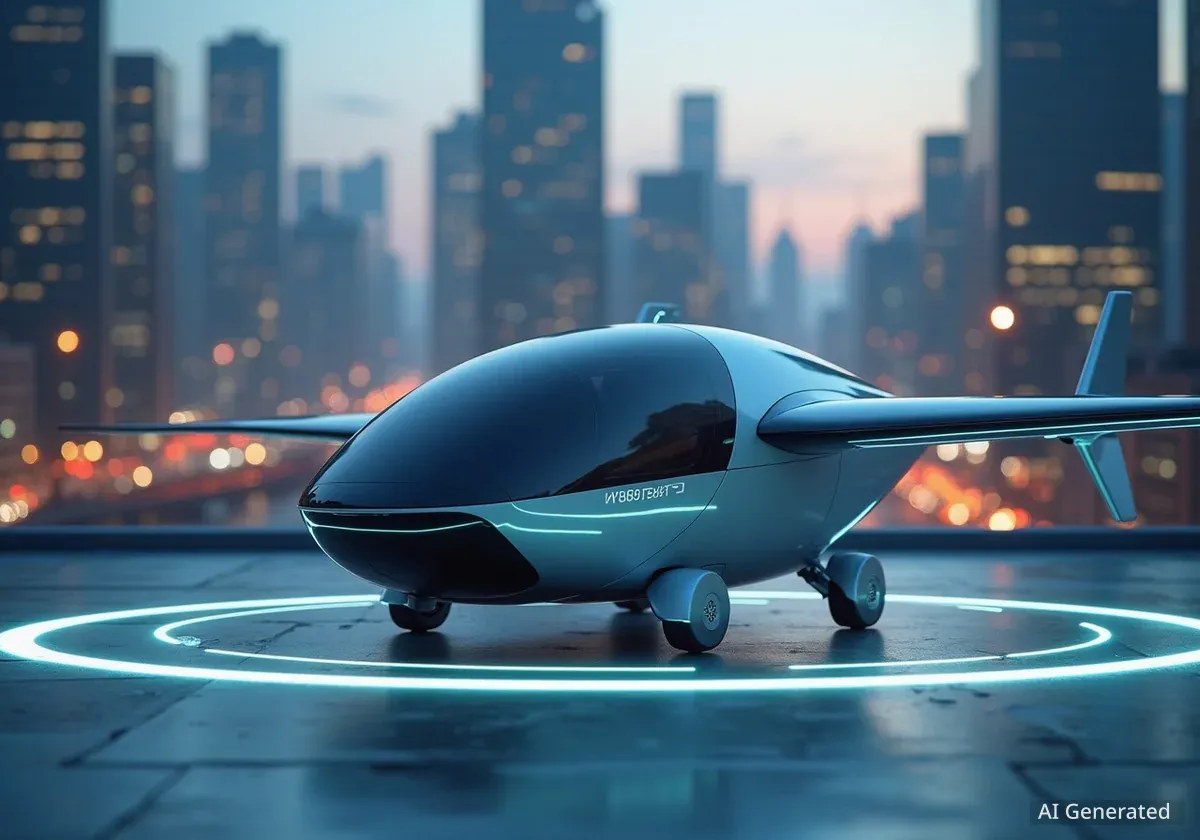Chevrolet has released details for the 2026 Blazer EV, an electric SUV designed for daily use with a focus on technology, comfort, and performance. The new model year introduces changes to its drivetrain options and adds a new appearance package, with prices starting at $46,095 for the entry-level trim.
The vehicle continues to offer a competitive driving range and features a high-performance SS variant for buyers seeking enhanced power. It is positioned as a practical electric vehicle from an established automotive brand with a large dealer network.
Key Takeaways
- The 2026 Chevy Blazer EV starts at $46,095, with the high-performance SS model priced from $62,095.
- For 2026, the rear-wheel drive (RWD) option has been discontinued. Drivetrain choices are now front-wheel drive (FWD) and all-wheel drive (AWD).
- The maximum driving range is an estimated 312 miles on a single charge for the FWD model with standard wheels.
- A powerful SS model is available, producing 615 horsepower and accelerating from 0 to 60 mph in 3.4 seconds.
- Standard interior features include a large 17.7-inch infotainment screen and an 11-inch digital driver display.
2026 Blazer EV Pricing and Model Updates
The 2026 Chevrolet Blazer EV will be available with a starting manufacturer's suggested retail price of $46,095. The top-tier Blazer EV SS, which is focused on performance, begins at $62,095. According to industry analysis, the Blazer EV is expected to maintain above-average resale value for its segment.
Key Changes for the New Model Year
One of the most significant updates for the 2026 model is the discontinuation of the rear-wheel drive configuration. The Blazer EV was previously notable for being available in FWD, RWD, and AWD formats. Now, the LT and RS trims will be offered with a choice of either front-wheel drive or all-wheel drive.
The performance-oriented SS model will be available exclusively with all-wheel drive. Additionally, Chevrolet is introducing a new Tech Bronze appearance package for the 2026 model, offering a new aesthetic option for customers.
A Shift in Drivetrain Strategy
By simplifying the drivetrain options, Chevrolet may be streamlining its production process. Focusing on FWD and AWD aligns the Blazer EV more directly with many competitors in the midsize electric SUV market, where these configurations are most common.
Performance and Driving Dynamics
The standard powertrain for the 2026 Chevrolet Blazer EV features an electric motor that produces 288 horsepower. This setup provides smooth and responsive acceleration suitable for city driving and highway cruising. The vehicle's handling is engineered for refinement, delivering a balanced and comfortable ride.
A notable feature is the one-pedal driving mode. This system uses regenerative braking to slow the vehicle down as the driver lifts off the accelerator, which can increase efficiency and reduce the need to use the brake pedal in many situations.
The High-Performance SS Model
For drivers seeking a more powerful experience, the Blazer EV SS model offers a significant increase in performance. It is equipped with a dual-motor, all-wheel-drive system that generates a combined output of 615 horsepower and 650 lb-ft of torque.
"Acceleration is forceful and instantaneous, taking an electric SUV that was already engaging to drive and making it a rocket," noted test drivers who experienced the SS model's capabilities.
When using the "Wide Open Watts" (WOW) mode, the SS can accelerate from 0 to 60 mph in a reported 3.4 seconds, making it the quickest and most powerful vehicle to ever wear Chevrolet's SS badge.
Range, Charging, and Efficiency
Driving range is a critical factor for electric vehicle buyers. The 2026 Blazer EV offers competitive figures that vary based on the chosen configuration. The front-wheel-drive model equipped with standard 19-inch wheels achieves the highest range, estimated at up to 312 miles.
Opting for all-wheel drive or larger 22-inch wheels reduces the estimated range to 283 miles. The high-performance SS model, with its larger battery and more powerful motors, has an estimated range of 303 miles.
Range Comparison with Competitors
- Chevy Blazer EV (FWD): Up to 312 miles
- Ford Mustang Mach-E: Varies by model, with some versions offering over 300 miles.
- Hyundai Ioniq 5: Varies by model, with some versions offering over 300 miles.
- Tesla Model Y Long Range: Up to 337 miles
Charging Speeds and Network Access
The Blazer EV supports DC fast charging, which allows for rapid power replenishment on the go. Chevrolet estimates that the battery can be charged from 10% to 80% in approximately 40 minutes. This translates to adding about 80 miles of range in just 10 minutes of charging under ideal conditions.
For home charging, a Level 2 charger can fully replenish the battery overnight. Furthermore, Blazer EV owners can access the Tesla Supercharger network using a compatible adapter, which significantly expands the number of available fast-charging stations for road trips.
Interior Design and Technology
Inside, the Blazer EV features a modern and tech-forward cabin. The dashboard is dominated by two large screens: an 11-inch digital gauge cluster for the driver and a large 17.7-inch central infotainment display. Despite the large screens, Chevrolet has retained physical knobs and buttons for essential controls like volume and climate, which many drivers find convenient.
The infotainment system comes with Google built-in, integrating services like Google Maps, Google Assistant, and the Google Play store directly into the vehicle without needing a smartphone connection.
Passenger and Cargo Space
The interior is designed to be spacious and comfortable for passengers. The rear seats offer 39 inches of legroom, which is adequate for most adults. However, its cargo capacity is slightly smaller than some key competitors. The Blazer EV provides 25.5 cubic feet of storage space behind the rear seats. It also lacks a front trunk, or "frunk," a feature found on some other electric vehicles.
Comparison with the Equinox EV
Potential buyers visiting a Chevrolet dealership might also consider the Equinox EV. The Equinox EV offers very similar interior dimensions, with slightly less rear legroom but marginally more cargo space, all at a significantly lower starting price. This makes it a compelling alternative for budget-conscious buyers.
Advanced Features and Safety
The Blazer EV is available with some of General Motors' most advanced technology features. One of the highlights is Super Cruise, an optional hands-free driving assistance system. It can be used on over 400,000 miles of compatible highways in North America, allowing the driver to take their hands off the wheel while the system manages steering, acceleration, and braking.
Standard Safety and Warranty
Every Blazer EV comes with a suite of standard safety features, including active blind-spot monitoring and forward collision warning with automatic emergency braking and pedestrian detection. The National Highway Traffic Safety Administration (NHTSA) has awarded the Blazer EV its highest 5-Star overall safety rating.
Chevrolet's warranty covers the vehicle for three years or 36,000 miles, while the battery and electric powertrain components are covered for eight years or 100,000 miles. The first maintenance service is also included free of charge within the first year or 12,000 miles.





